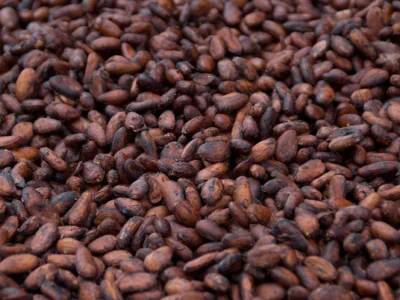Ghana’s manufacturing sector plays a crucial role in the nation’s economic development, contributing significantly to GDP and employment. In 2024, the industry sector which includes manufacturing, grew by a robust 7.1% year-on-year, contributing to Ghana’s overall GDP growth of 5.7%. This dynamic industry spans a diverse range of sub-sectors including agroprocessing, textiles and footwear, electronics and household appliances, cocoa processing, and engineering and machine tools. The sector has witnessed steady growth, driven by favourable government policies, increased foreign direct investment, and a commitment to industrialisation under strategic frameworks.
Additionally, the establishment of special economic zones and industrial parks, along with incentives like tax holidays (e.g. 5 years for agroprocessing businesses and 10 years for Free Zone Enterprises) and duty exemptions on machinery and raw materials continue to enhance the sector’s attractiveness. Ongoing reforms and investments in infrastructure, energy, and technology are expected to pave the way for a more robust and competitive manufacturing landscape.
AGROPROCESSING
In 2023, Ghana’s paddy rice production stood at approximately 1.038 million metric tons (MT). Forecasts indicate a steady increase, reaching 1.0757 million MT in 2024 and 1.1145 million MT in 2025. Despite this growth, domestic milled rice production still falls short of consumption, leading to a persistent trade deficit. The pattern of imports is an indication of the opportunities for investment in local rice milling and cultivation to achieve self-sufficiency.
Sugar production in Ghana is minimal. While the government has indicated its intention to revitalise the Komenda Sugar Factory, its operationalisation has faced delays. Cocoa bean production in the 2023–24 marketing year was 530,873 MT, representing the worst performance in 15 years due to adverse weather, black pod fungal disease, and reduced insecticide supply.
TEXTILES AND FOOTWEAR
The textiles and footwear manufacturing sector in Ghana, encompassing ginneries, textile mills producing batik, wax cloth, and traditional textiles like kente and smock, faces a consistent trade deficit. In 2023, the manufacturing sector, including textiles and electronics, was valued at approximately US$4 billion, with an annual growth rate of 8% over the past five years. Despite the growth in the domestic market, the sector still relies heavily on imports, with foreign retailers dominating.
SECTOR OPPORTUNITIES
- Establishment of two or three new refineries, each with a combined capacity of approximately 2 million MT of alumina (refined bauxite).
- Retrofitting of Volta Aluminum Company Limited to increase production capacity to 300,000 MT of aluminium.
- Setting up a new smelter with a production capacity of up to 500,000 MTof aluminium.
- The Cocoa Roads Improvement Programme (CRIP) offers a chance for players in the construction materials industry to supply road builders.
- The cashew and cassava sectors present a significant opportunity for investors with capital to invest, as there is ample availability of inputs and the government has introduced a variety of incentives aimed at ensuring the productive and profitable operations of factories.
INVESTMENT INCENTIVES
- Investors can benefit from tax holidays, depending on the incentive scheme an entity registers under, such as free trade zones, and the Ghana Investment Promotion Centre (GIPC) itself.
- Ghana offers access to the market of the Economic Community of West African States (ECOWAS); the 1.3 billion potential customers across AfCFTA; and European Union and US markets through active trade agreements.
- Compared to other African countries, Ghana boasts relatively stable supply and affordable power costs.
- Compared to other advanced economies, Ghana offers highly attractive low labour costs, making it an appealing destination for establishing production facilities.
- Ghana benefits from excellent sea and air connections, facilitating the import and export of products to and from international markets, including Europe, America, and Asia.











Comments